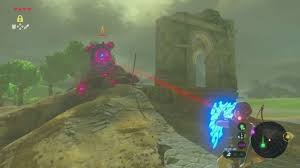Table of Contents
In today’s fast-paced world, where deadlines loom large and expectations soar high, finding the time to step back and let ideas simmer can seem like a luxury. However, for writers aiming to craft concise and impactful pieces, such as short letters for The New York Times (NYT), embracing the concept of chilling time can be a game-changer.
What are Short NYT Letters?

Short letters to the editor of The New York Times serve as a platform for readers to express their opinions, share insights, or respond to articles published in the renowned publication. These letters, typically limited to a few hundred words, require precision, clarity, and a compelling narrative to make a lasting impression on readers and editors alike.
The chilling time for a short NYT crossword clue is “RANDR”
Importance of Chilling Time
What is Chilling Time?
Chilling time refers to the practice of stepping away from a writing project after completing a draft and allowing it to rest before revisiting it for further refinement. This period of detachment provides writers with the opportunity to gain distance from their work and return to it with a fresh perspective.
Why is it Important?
Chilling time is crucial for writers, especially when crafting short pieces like NYT letters, as it allows for:
- Clarity and Fresh Perspective: Distance from the initial drafting phase enables writers to identify areas for improvement, spot errors, and refine their ideas with clarity.
- Enhanced Creativity: Time away from the manuscript can spark new insights and ideas, leading to more innovative and engaging content.
- Improved Editing Process: Returning to the draft after a break facilitates a more effective editing process, enabling writers to detect inconsistencies, strengthen arguments, and polish language.
Benefits of Chilling Time for Writing
Incorporating chilling time into the writing process offers numerous benefits:
Clarity and Fresh Perspective
Stepping away from a piece of writing allows the mind to reset, making it easier to spot weaknesses and areas for improvement upon returning to the draft. This fresh perspective enhances the overall clarity and coherence of the final piece.
Enhanced Creativity
Time spent away from the manuscript encourages subconscious processing, leading to new ideas and perspectives. Writers often find that they come up with their best solutions and insights when they are not actively focusing on the problem.
Improved Editing Process
Chilling time enables writers to approach the editing process with renewed vigor and objectivity. By revisiting the draft after a break, writers can identify and rectify errors more effectively, resulting in a polished and refined final product.
How to Incorporate Chilling Time into Writing Routine
Setting Aside Time
Allocate dedicated periods for chilling time in your writing schedule. Whether it’s a few hours, days, or even weeks, establishing regular intervals for stepping back from your work is essential for optimal results.
Engaging in Relaxing Activities
During chilling time, engage in activities that relax and rejuvenate your mind. Whether it’s going for a walk, practicing mindfulness, or pursuing a hobby, find what works best for you to recharge your creative batteries.
Utilizing Writing Prompts
When returning to your draft after chilling time, consider using writing prompts to jumpstart your creativity and exploration. Prompts can help you approach your piece from new angles and uncover fresh insights.
Overcoming Challenges
Impatience
It’s natural to feel eager to complete a writing project but resist the urge to rush through the process. Embrace the value of chilling time and trust that taking a step back will ultimately lead to a stronger and more impactful piece.
Finding Balance
Balancing the need for chilling time with deadlines and other commitments can be challenging. Experiment with different approaches to scheduling and prioritize self-care to ensure that chilling time remains an integral part of your writing routine.
Success Stories: Authors and Chilling Time
Numerous successful authors swear by the practice of chilling time:
Stephen King
Renowned author Stephen King advocates for taking a break between drafts to gain perspective and approach revisions with fresh eyes. His disciplined approach to chilling time contributes to the depth and quality of his writing.
J.K. Rowling
J.K. Rowling, the creator of the beloved Harry Potter series, emphasizes the importance of stepping away from a manuscript to allow ideas to percolate and evolve. Her dedication to chilling time enables her to refine her storytelling craft and captivate readers worldwide.
Final Words
In the realm of short NYT letters and beyond, chilling time emerges as a valuable tool for writers seeking to elevate their craft. By embracing periods of detachment and allowing ideas to marinate, writers can unlock new levels of clarity, creativity, and refinement in their writing.
People also ask
What does chilling time for short mean?
It refers to the time limit for publishing brief letters to the editor of The New York Times.
What does chilling time RandR mean?
It may refer to rest time or a cooling-off period.
What is the average time to solve the nyt mini?
The average solving time for the NYT Mini Crossword is around 3-5 minutes for experienced solvers.
What time does the nyt mini crossword change?
The NYT Mini Crossword is updated daily at around 10 pm ET.




